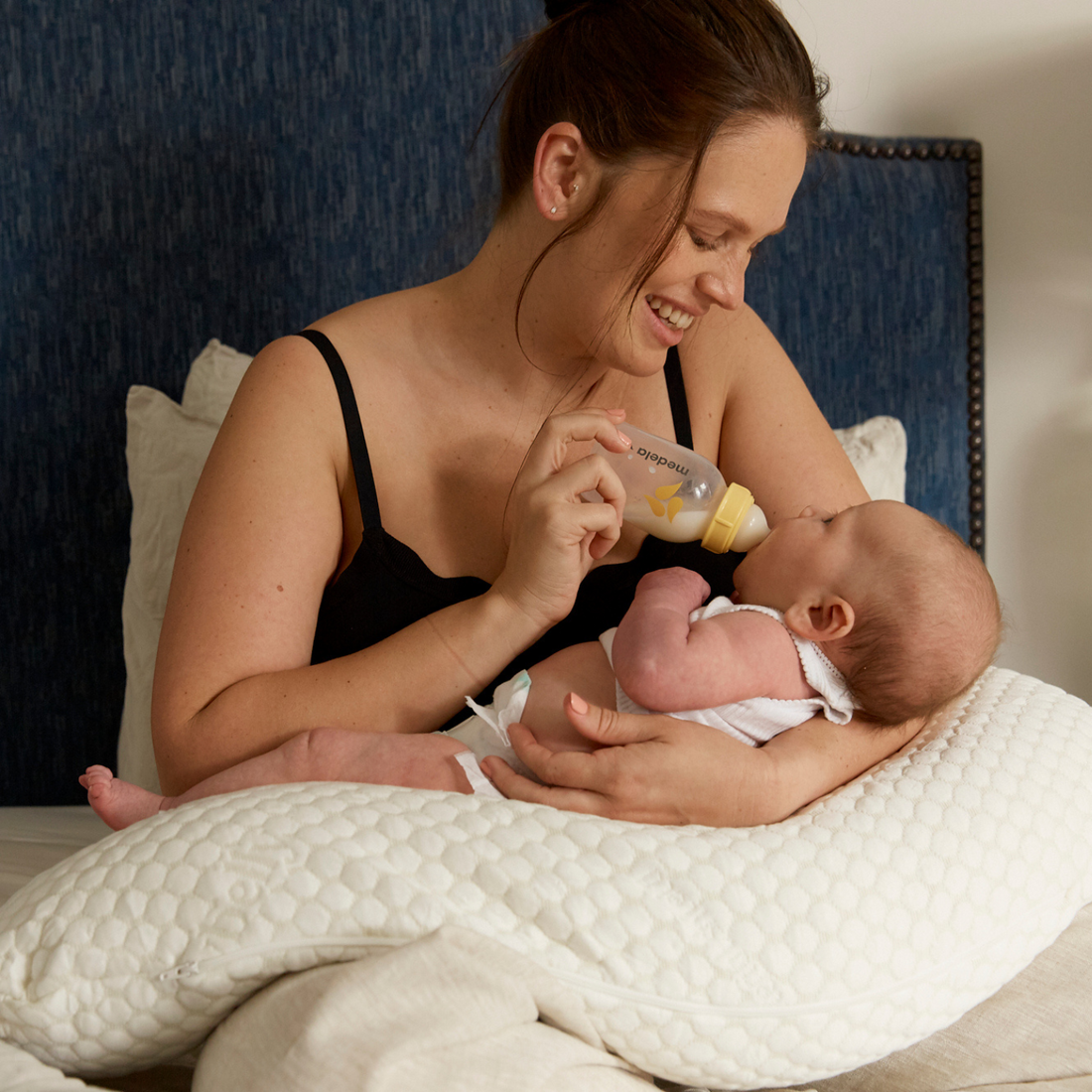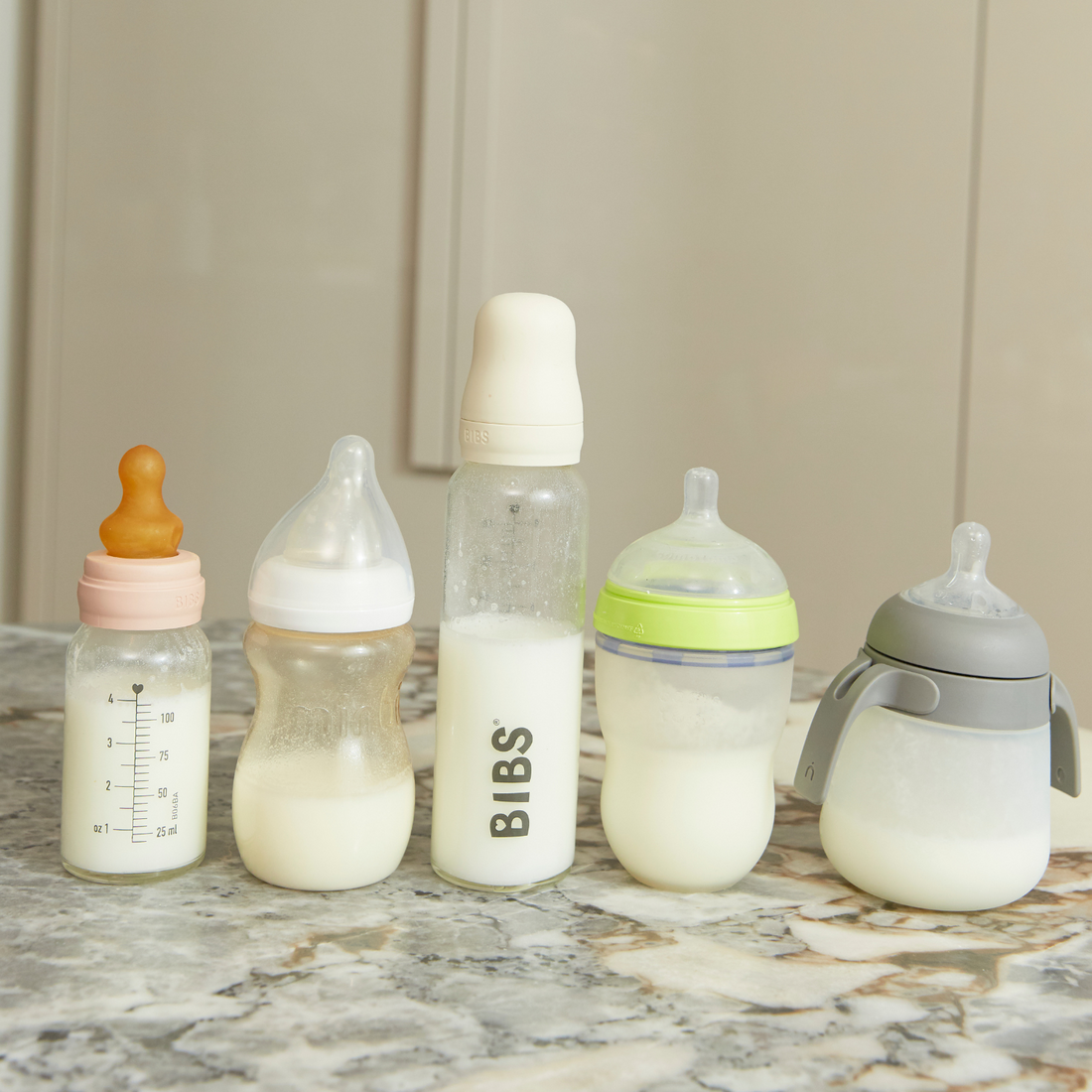'Combo feeding', 'mixed feeding', 'supplementing', and 'topping-up', are all terms that in the baby world mean the same thing: giving your baby both breastmilk and formula.
The reasons parents combo feed are entirely personal but can include concerns about supply and baby’s weight-gain, trouble with pumping or wanting the baby to be not solely dependent on mum for milk. It can be for a little while (for example, when weight is a concern), or a long time also be the step between breastfeeding and weaning. According to a 2022 ABS almost all babies are given breastmilk at birth in Australia. The rate of exclusive breastfeeding (means only given breast milk whether directly from the mum or via pumping and a bottle) declines from there with just 3/4 exclusively breastfed at 2 months, 3/5 at 4 months and 2/5 at 6 months. However the rate of babies still receiving breast milk, just not exclusively i.e. also being given formula, is much higher: 7/10 at 6 months. This means most Australian babies are combo fed.
What to Consider Before You Start Combo Feeding
Your supply: The Australian Breastfeeding Association advises that combo feeding to supplement a low supply can potentially make your supply even lower as the more formula your baby takes, the less milk your breasts will make, as it’s a supply and demand system. Some mums successfully balance breast and formula feeding for many months, but it’s wise to seek advice from a lactation consultant or ABA counsellor (available 24/7) before you start.
What formula: Choosing a formula can feel daunting, and isn’t something you want to be doing at 3am, so do a bit of research before hand to find the one that feels right for you and your baby. There are some absolutes about formula in Australia that may help you choose.
- Firstly, in Australia all formulas must meet the required national standards. There is no evidence that one particular type or brand is better than any other. The differences lie in where they are made, and what they are made with e.g. plant-based, goats milk or cow milk. Choose what you can afford and align with your preference or baby’s dietary restrictions.
- If your baby is under 6 months old, you need to use a 'starter', 'first' or ‘stage 1’ formula. Between 6 and 12 months, starter formula is still suitable or you may use a 'second' or 'follow-on' formula. Over 12 months, your baby doesn't need formula as they can now have milk. ‘Stage 3’ or ‘toddler’ formula is available.
- If you need help choosing a formula, or your baby doesn’t do well to a particular kind, or reacts to it, the best people to ask are your child health nurse or health care provider.
- Finally, even though in Australia we have reliable access to clean water and electricity, contamination of formula is still possible. It is also very important that powdered milks are made up correctly i.e. as directed on the tin, noting that each is different.
How to Mix Feed
If you are top-up feeding, it’s recommended that you first breastfeed your baby from both sides before offering a formula bottle, i.e. the “top-up”. You can even offer both breasts again after a short break, before a top-up formula feed. The ABA recommends keeping top-up feeds small if you are concerned about keeping up your supply and using paced bottle-feeding techniques (where you take lots of small breaks) to avoid over-feeding formula to your baby. If you are simply giving both breast and formula feeds, how you do it will be what works for you. You may offer breastfeeds when you are together and formula while you are apart with work or child care, or they may have formula right before bed. Whatever routine you settle in to, it’s important that you do it gradually to give your body time to reduce the amount of milk it makes - this will also lower your chance of getting swelling, engorgement, blocked ducts or mastitis.






















